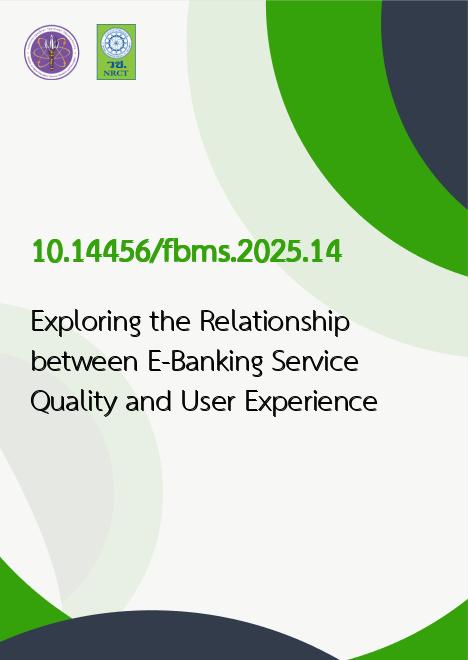
|
Exploring the Relationship between E-Banking Service Quality and User Experience |
|---|---|
| รหัสดีโอไอ | |
| Creator | Seung Hwan Kang |
| Title | Exploring the Relationship between E-Banking Service Quality and User Experience |
| Contributor | Jira Yammeesri |
| Publisher | University of the Thai Chamber of Commerce |
| Publication Year | 2568 |
| Journal Title | Journal of Family Business and Management Studies |
| Journal Vol. | 17 |
| Journal No. | 2 |
| Page no. | 57-76 |
| Keyword | Electronic Banking, Service Quality, User Experience |
| URL Website | www.fbmsjournal.com |
| Website title | fbmsjournal |
| ISSN | 2821-9643(online) |
| Abstract | Given the significant influence of digital innovations on the modern banking industry, this research explores the complex relationship between the user experience and the quality of electronic banking services. The literature analysis carefully looks at important aspects including user experience and service quality, including security, cost, convenience, and overall service perceptions. Placed inside the well-known SERVQUAL model developed by Parasuraman et al., a well-known framework for evaluating the quality of electronic financial services, the study chooses to use a sample of 100 users chosen at random from different locations in Chiang Mai, utilizing 75 qualifying data points. This sample size ensures robust analysis while being representative of common restrictions seen in empirical research, such as time and budget limits. These findings highlight the critical role that e-banking service quality plays in influencing user views, particularly with regard to security, expense, ease of use, and general satisfaction. The favorable associations that have been noticed highlight how crucial it is to provide top-notch services in order to increase consumer satisfaction and loyalty. Furthermore, the conversation that follows emphasizes how essential it is to keep improving e-banking systems, with an emphasis on things like cost-effectiveness, security measures, and user-friendly interfaces. The recommendations put forth support for the incorporation of customer input in order to enable continuous enhancements, which will in turn conform to changing user expectations and offer priceless information for practitioners and academics working in the field of electronic banking. |